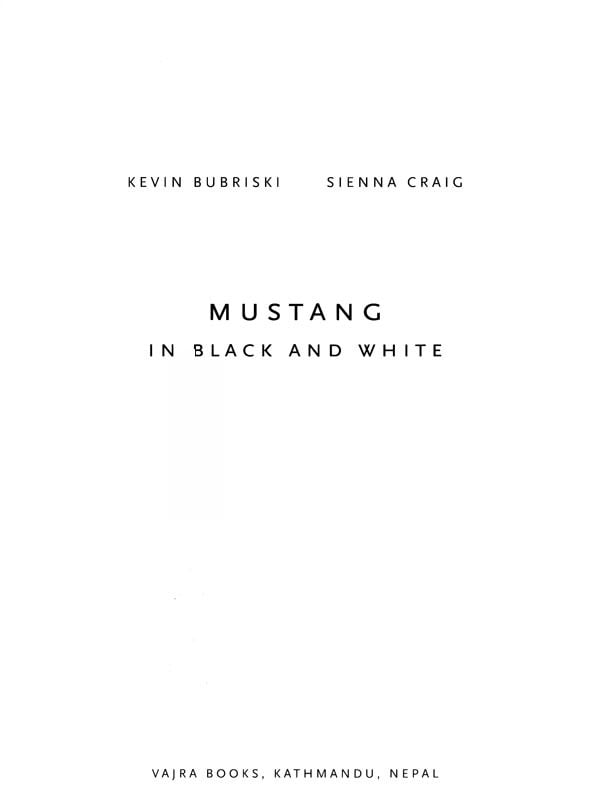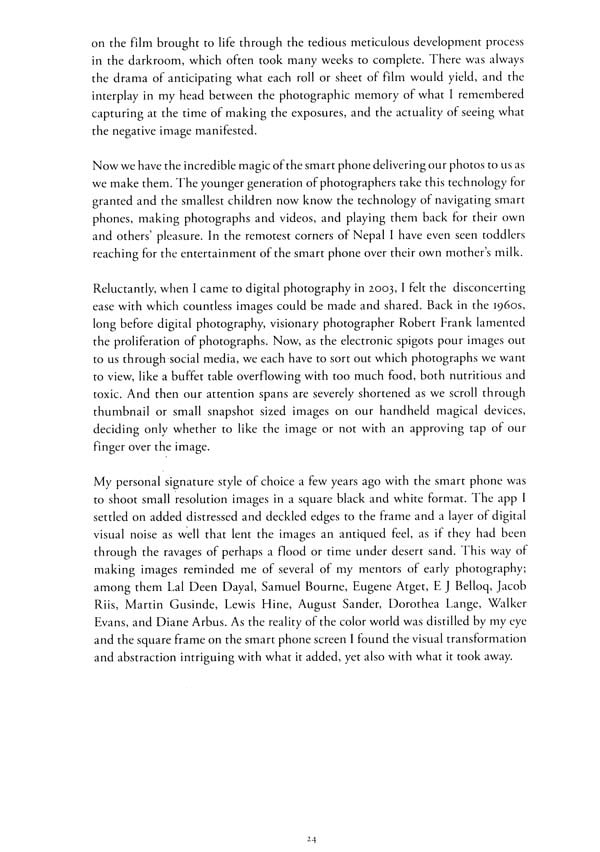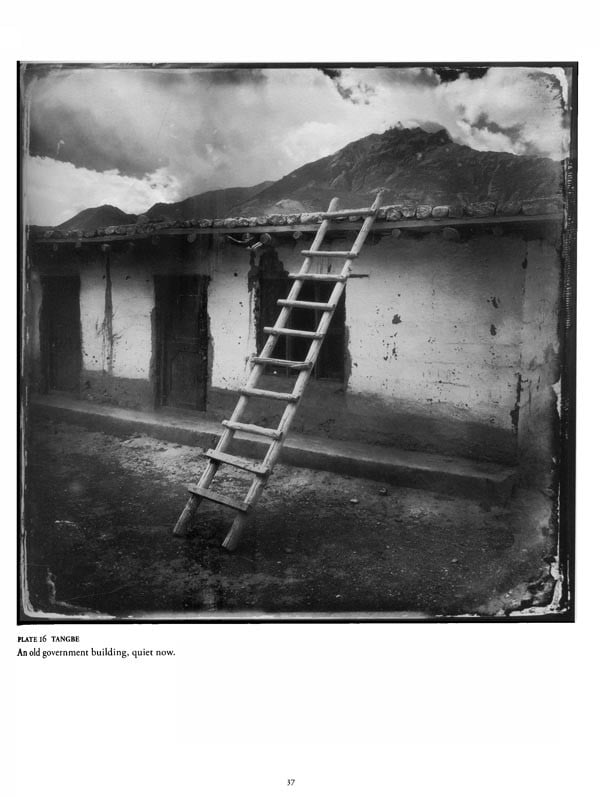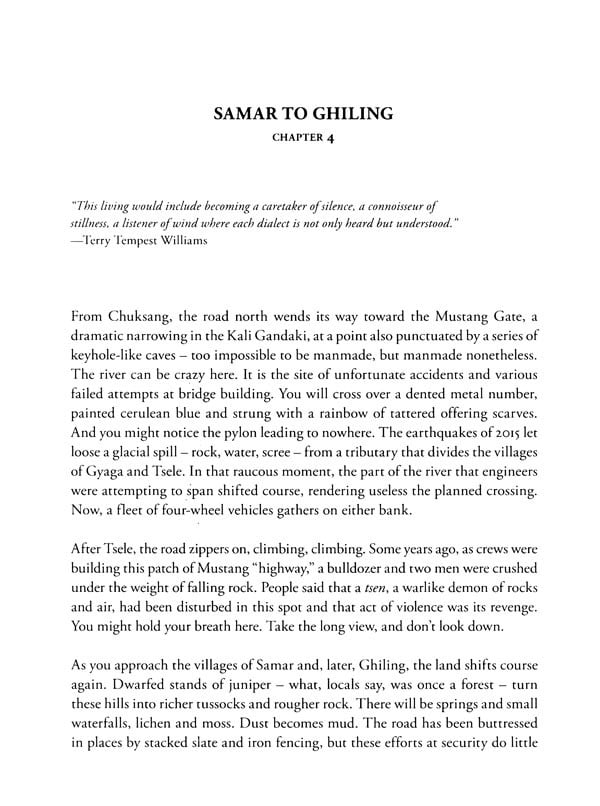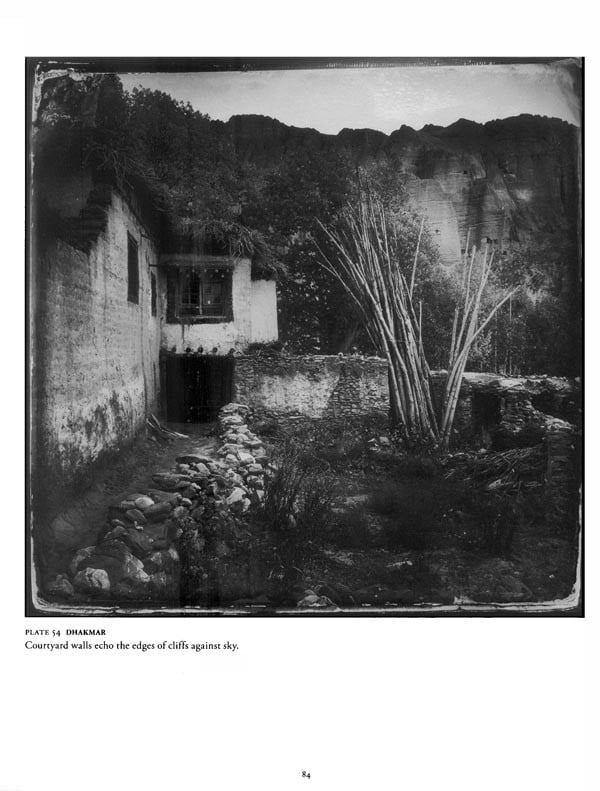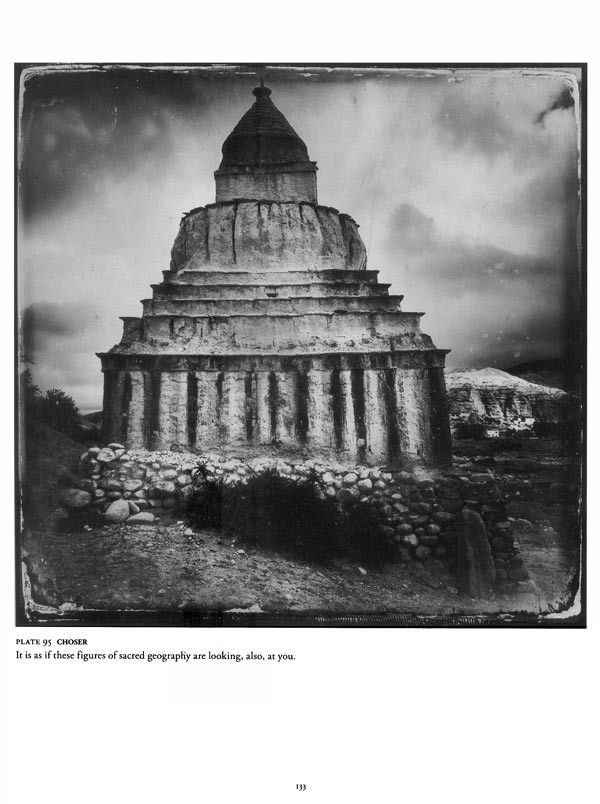About the Book MUSTANG, NEPAL, is known for its vibrant landscapes - blue skies, vermillion-colored cliffs, fluted canyons of deep ochre. It is a tapestry of Himalayan culture and history, a social and economic crossroads for trade, tourism, and Tibetan tradition. Today, the people of Mustang are navigating significant transformations: from the impacts of climate change across this rain shadow landscape to the lived effects of outmigration on communities who have relied for centuries on agriculture, pastoralism, and their role as culture brokers between the Tibetan plateau and Hindu South Asia.
Mustang in Black and White captures this area's elemental qualities, revealing the enduring cultural foundations and shifting daily rhythms of Himalayan village life. Kevin Bubriski's masterful black-and-white portraits of this place and its people are coupled with Sienna Craig's thick descriptions of what is, and is not, seen through the eye of the camera. Against the grain of glossy, idealized images of Tibetan and Himalayan lifeworlds, Mustang in Black and White illuminates the quotidian beauty and cultural complexity of this region.
About the Authors Kevin Bubriski is Associate Professor of Photography at Green Mountain College in Poultney, Vermont (USA) where he has taught since 2010. He has been photographing Nepal for forty-two years, since arriving there in 1975 as an American Peace Corps volunteer. Bubriski's fine art photographs are in the permanent collections of the Museum of Modern Art and The Metropolitan Museum of Art in New York, as well as Bibliothèque Nationale, Paris. Over the 2016-2017 academic year he was on a Senior Scholar Fulbright Fellowship in Nepal where he continued his documentary and fine art photography in Nepal's Karnali Zone.
Sienna R. Craig is Associate Professor of Anthropology at Dartmouth College in Hanover, New Hampshire (USA), where she has taught since 2006 She is the author of Horses Like Lightning A Story of Papage through the Himalayar (Wisdom Publications 2008), and Healing Elements Efficacy and the Social Fealogies of Tibetan Medicine (UC Prest 2017). Born in Sama Barbara, California. Hemet triveled to Mustang as a college student in og and has been returning ever since. In addition sedeme writing, Craig's Mustang-inspired work cludes memoir, poetry, and children's Tertre She is currently writing an ethnography abour migration and social change between Matting and New York City. She lives in Vermont with her husband Ken and daughter Aida.
Preface Not long after I first arrived in Kathmandu in 1980, I happened to be strolling through the streets with a European Buddhist friend who already had some knowledge of the country. On the opposite side of the road we saw a small group of men and women in black homespun, carrying large bundles on their backs and looking straight ahead with an air of grim purpose. "They're Tibetans my friend said. "But not from Tibet. They're from one of the borderland areas like Mustang. They carry that darkness with them." I could see what he meant. The Tibetans I had encountered so far, all members of the diaspora, radiated color and gaiety, sang songs accompanied by the drammen, and wore their Buddhism on their sleeves, or talked with crudition about English literature and French film. The first months I spent in a village in Mustang did little to dispel my sense of this contrast, and my periodic encounters with "proper" Tibetans were always a welcome break. Nearly forty years later, this impression has still not changed, but I've understood two things: first, that if this characterisation seems to betray a shockingly colonial or Orientalist attitude, it is also an attitude that is unquestionably shared by Tibetans, whether Buddhists or followers of the Bon religion; and secondly, the darkness to which my European friend drew my attention is in fact a black box full of unsuspected and little-understood wonders.
Since the Tibet Autonomous Region has ceased, in the past few decades, to match our expectations of what Tibet should look like, other areas on the periphery have been ushered forward as the genuine article.
Introduction The 108 images in this book document a short trip taken by the photographer Kevin Bubriski to Mustang in October 2016. They demonstrate that the author has returned to his starting point, the portraits produced in 1984 and role in Humla. Jumla. Mugu, Gorkha and Rasowa with a tripod and a 45 large format view camera. On his pilgrimage through Mustang, Bubriski's gaze is un-agitated, almost detached. Black and white accommodates that approach Even the chosen size of the images is absolutely appropriate.
Much has been philosophized about black and white. It was Eugene Smith (918 1978) who commenced this working style in a powerful way. He was a restless photographer who joined LIFE magazine in 1939, documenting the bardes at Iwo Jima, Guam, and Okinawa and survived after being severely wounded. In 1972. Smith captured the environmental catastrophe created at Minamata, but despite being thrashed by the plant security he kept unfolding, the truth of the plant's lethal practice. Georg Stefan Troller met him on September 17, 1974 for an interview for German television. Smith disapproved of being portrayed in color and comments: "Only black and white sinks in the soul." This was his guiding credo and conviction. Troller recalls this conversation fifteen years later in German, saying "nur Schwarzweiß dringt in die Seele. This "dringen" or "eindringen" refers to a process of penetration that does not hurt. To "ank in" probably characterizes a slow process of taking possession of what the eyes encounter.
**Contents and Sample Pages**
